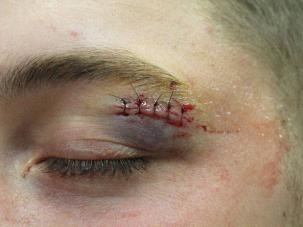August 27th, 2010 by RyanDuBosar in Better Health Network, News
No Comments »

California launched the nation’s largest tele-health network, a $30 million public/private project to bring broadband access designed to reduce the cost of followup care by 40 percent and overall costs by 6 percent. The network seeks to connect more than 800 California healthcare facilities, including rural, underserved, and Indian health facilities, to a statewide network of healthcare and emergency services. (Healthcare IT News)
*This blog post was originally published at ACP Internist*
August 18th, 2010 by Shadowfax in Better Health Network, Health Policy, News, Opinion
No Comments »

An alert reader alerted me to this related piece in Slate: “We Can’t Save You: How To Tell Emergency Room Patients That They’re Dying.” An excerpt:
The ER is not an easy place to come to these realizations or assess their consequences. A handful of physicians are trying to change that. Doctors like Tammie Quest, board-certified in both palliative and emergency medicine, hope to bring the deliberative goal-setting, symptom-controlling ethos of palliative care into the adrenaline-charged, “tube ’em and move ’em” ER. Palliative/emergency medicine collaboration remains rare, but it’s growing as both fields seek to create a more “patient-centered” approach to emergency care for the seriously ill or the dying, to improve symptom management, enhance family support, and ensure that the patient understands the likely outcomes once they get on that high-tech conveyor belt of 21st-century emergency medicine.
Emergency medicine and palliative care-certified? That’s an interesting mix. We have a great palliative care service where I work (in fact, it just won the national “Circle of Life” award.) It makes a lot of sense to have a palliative care nurse stationed in (or routinely rounding) the ER, though. I think I’m going to suggest this to our hospice folks.
*This blog post was originally published at Movin' Meat*
August 15th, 2010 by GruntDoc in Better Health Network, Humor, Opinion, True Stories
No Comments »

 I’ve internalized all the dogma of medicine, for good and bad.
I’ve internalized all the dogma of medicine, for good and bad.
When I was an EMT, green as a twig in an ER, I learned the basics: For any wound with hair employ the razor, and get the hair away from the laceration so the doc could do a good closure.
So, employment week #3: Eyebrow laceration? Shaved that sucker clean off. ER doc freaked out, and I learned some medical dogma: Don’t shave eyebrows, they don’t grow back. Heard it later, too — all the way through training, in fact. Read more »
*This blog post was originally published at GruntDoc*
August 11th, 2010 by KevinMD in Better Health Network, Health Policy, News, Opinion
No Comments »

In their most recent piece at Slate, emergency physicians Zachary F. Meisel and Jesse M. Pines tackle the issue of bouncebacks — that is, the re-admission of recently-discharged hospitalized patients. They bring up good some good points, and point out that until recently hospitals really didn’t have any incentive to reduce bouncebacks:
…hospitals have never had a compelling reason to try to prevent bouncebacks. Hospitals are typically paid a flat sum for each inpatient stay — shorter stays equal higher profits. When patients bounce back, hospitals can charge the insurance company twice for the same patient with the same problem. Many hospitals also view bouncebacks as out of their control: If a patient boomerangs back because she doesn’t follow doctor’s orders, it’s not the hospital’s fault.
With health reform, however, things are changing. In an effort to reduce bouncebacks, hospitals are paid less for re-admissions, and they must publish their bounceback rates. Read more »
*This blog post was originally published at KevinMD.com*
August 11th, 2010 by RyanDuBosar in Better Health Network, Health Policy, News, Research
No Comments »

Office-based practices are focusing increasingly on patients 45 and older, reports the Centers for Disease Control and Prevention.
In 2008, those 45 and older accounted for 57 percent of all office visits, compared to 49 percent in 1998. Prescriptions, scans and time spent with the doctor also became increasingly concentrated on those middle aged and older, according to data from the CDC’s National Center for Health Statistics.
Also, physician visits increasingly concentrated on medical and surgical specialists and less on care provided by primary care practitioners for those ages 45 and older. Furthermore, for patients ages 65 and older, the percentage of visits to primary care specialists decreased from 62 percent to 45 percent from 1978 to 2008, while the percentage of visits to physicians with a medical or surgical specialty increased from 37 percent to 55 percent. Read more »
*This blog post was originally published at ACP Internist*





 I’ve internalized all the dogma of medicine, for good and bad.
I’ve internalized all the dogma of medicine, for good and bad.








